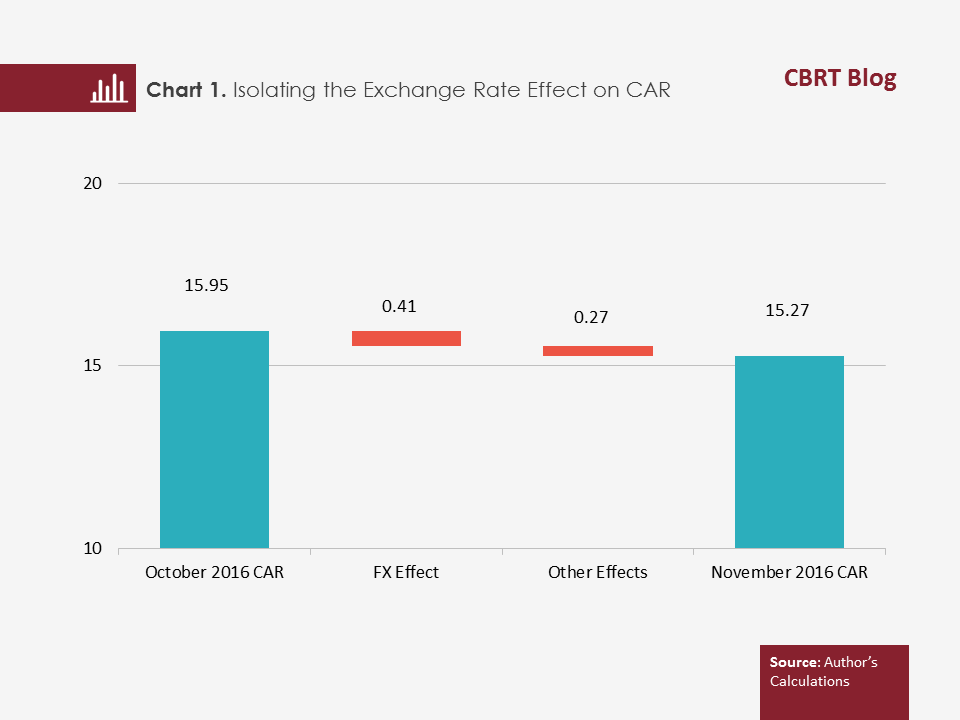Like other firms, banks generate funds via two channels: borrowing and capital. As capital is banks’ own resources, it doesn’t have a maturity and does not have a payback obligation. Moreover, capital acts as a buffer when a bank experiences a loss. Since funding from capital is a risk-free resource, the regulatory authorities impose an obligation for banks to meet a minimum part of their total funding from their capital. The ratio, which is called the “Basel Minimum Capital Requirement” in regulation literature, is the ratio of regulatory capital to risk-weighted assets:
The capital adequacy ratio (CAR) is influenced by the changes in regulatory capital and risk-weighted assets. Regulatory capital increases on the back of new capital inflows and positive contribution from profitability. As almost all of the borrowing instruments such as subordinated debts are denominated in foreign currencies and they are counted within regulatory capital, any rise in exchange rates drives up regulatory capital although the impact is limited. Meanwhile, risk-weighted asset rise on the back of the increase in average risk weights and total asset growth. During periods of appreciation in exchange rates, the TL equivalent of banking sector’s asset size also increases and so do the banks’ risk-weighted assets. In total, during appreciation of exchange rates, the rise in risk-weighted assets is well above the rise in regulatory capital. This mainly stems from the fact that the share of FX assets in risk-weighted assets is higher than FX capital in regulatory capital. Therefore, the CAR trends down when TL depreciates.
This analysis examines the impact of exchange rate developments on CAR via an example. The exchange rate basket appreciated against the TL by 9.1 percent from end-October till end-November in 2016. In this period, the banking sector’s CAR decreased to 15.3 percent from 16 percent. The decline is mainly attributed to the boosting effect of exchange rates on FX assets as well as the developments in capital, and growth in other TL assets. In the table below, we calculated the downward impact on CAR exerted by exchange rates by decomposing the mentioned impacts.

Adjustment for FX is based on the assumption that the level of exchange rates by end-November was the same as that of end-October. Moreover, the limited boosting effect of the rise in exchange rates on regulatory capital excluding FX and TL assets has been neglected. Consequently, the 9.1 percent drop in exchange rates between October-November 2016 induced a 41- basis points decline in the banking sector’s CAR. The change in regulatory capital excluding FX and the change in TL assets exerted a 27-basis point drop in CAR. A linear calculation suggests that 10 percent depreciation in exchange rates induces a 45-basis point decline in CAR in the short term.

We would like to remind that this calculation is based on a partial analysis and does not reflect dynamic effects. For instance, while an appreciation in exchange rates has a downward impact on CAR in the short term, these impacts are likely to fade away in case of a rise in profitability in the medium term. As income from FX assets is also denominated in FX, profitability will be positively affected by exchange rates. Meanwhile, profitability is one of the main sources of the rise in capital. To sum up, we should keep in mind that CAR, which moves downward due to exchange rate developments in the short term, can rebound owing to the rise in profitability in longer terms.
